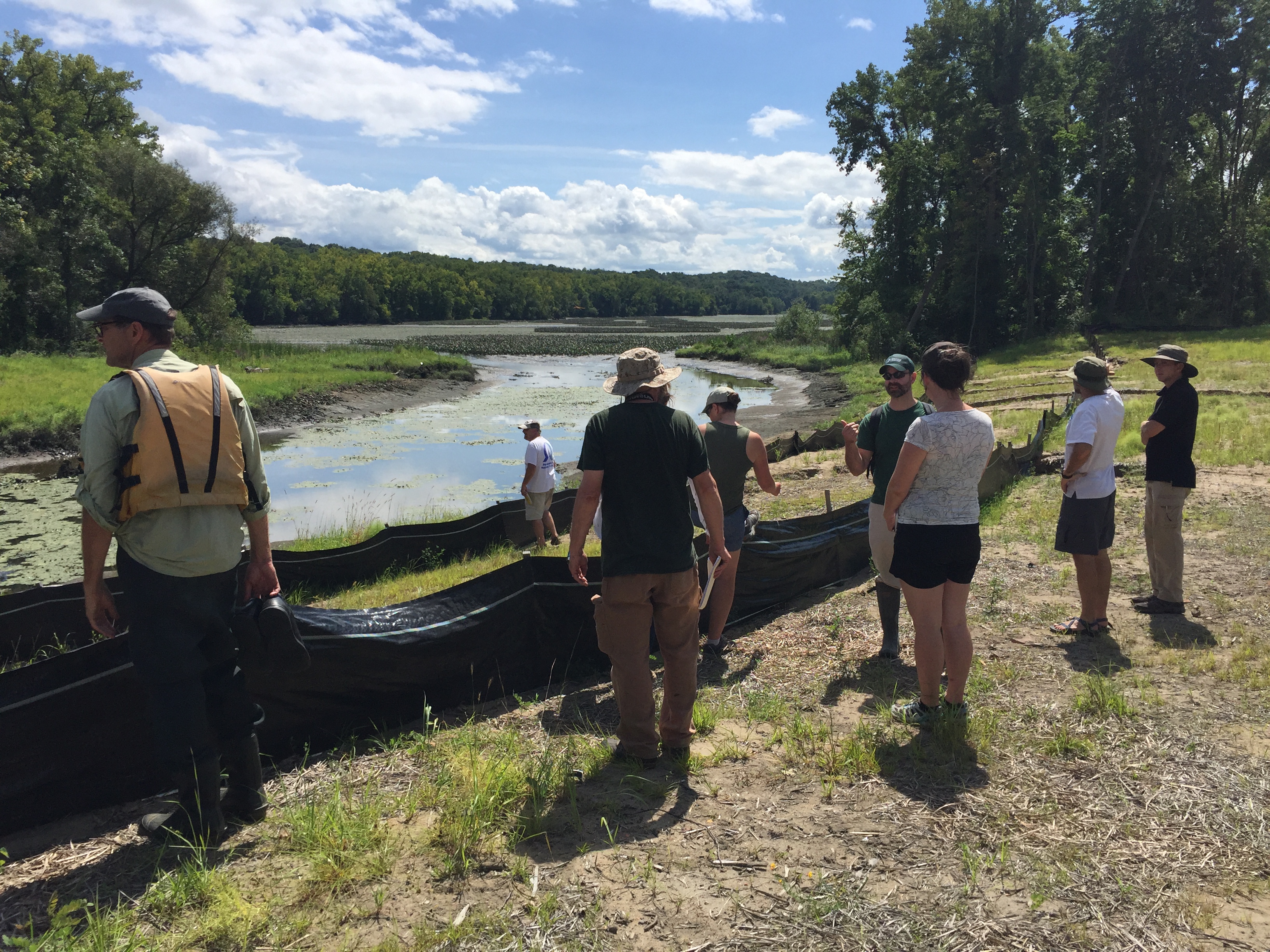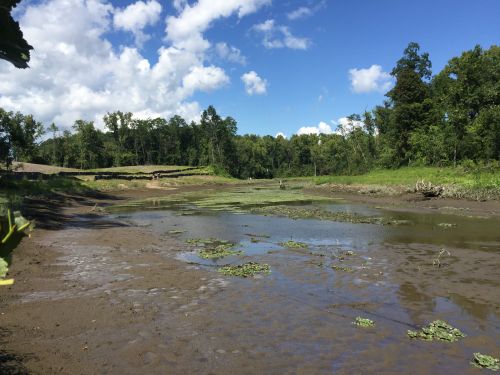Hudson River Natural Resource Trustees Tour Side Channel Demonstration Project in New York
SEPT. 7, 2018 — Historically, the upper portion of the Hudson River estuary between approximately Athens and Troy, New York, consisted of braided river channels. Intertidal and shallow water habitats within these channels supported emergent and submerged vegetation and functioned as important fish habitat. Navigational improvements from the early1800s to the mid 1900s involved construction of longitudinal dikes parallel to the river, deepening of the main channel and placement of the dredged sediment behind these dikes. Change analysis demonstrates that the dredged sediments filled in side channels and backwater areas, connected islands to the mainland, and converted aquatic ecosystems to upland habitat. These actions led to the significant loss of freshwater tidal wetlands and fish and benthic habitat.
NOAA's partners at the Hudson River Estuary Program organized a tour for the Hudson River Natural Resource Trustees of a side channel demonstration project at Gays Point Island near Coxsackie, New York on Aug. 30, 2018. Dredge spoils were excavated in 2017 to re-create the flowing channel and associated wetlandsand hydrologically and connect two bays. The project was funded by the NYS Thruway Authority as mitigation for impacts from the construction of the new Tappan Zee Brridge. Scientific monitoring will assess physical, chemical and biological conditions. Lessons-learned have the potential to inform restoration planning and implementation of other side channels in the upper estuary. Both the Hudson River Estuary Restoration Plan and the Hudson River Comprehensive Restoration Plan identify restoration of side channels as a goal for the estuary.
For further information, contact Lisa.Rosman@noaa.gov.


